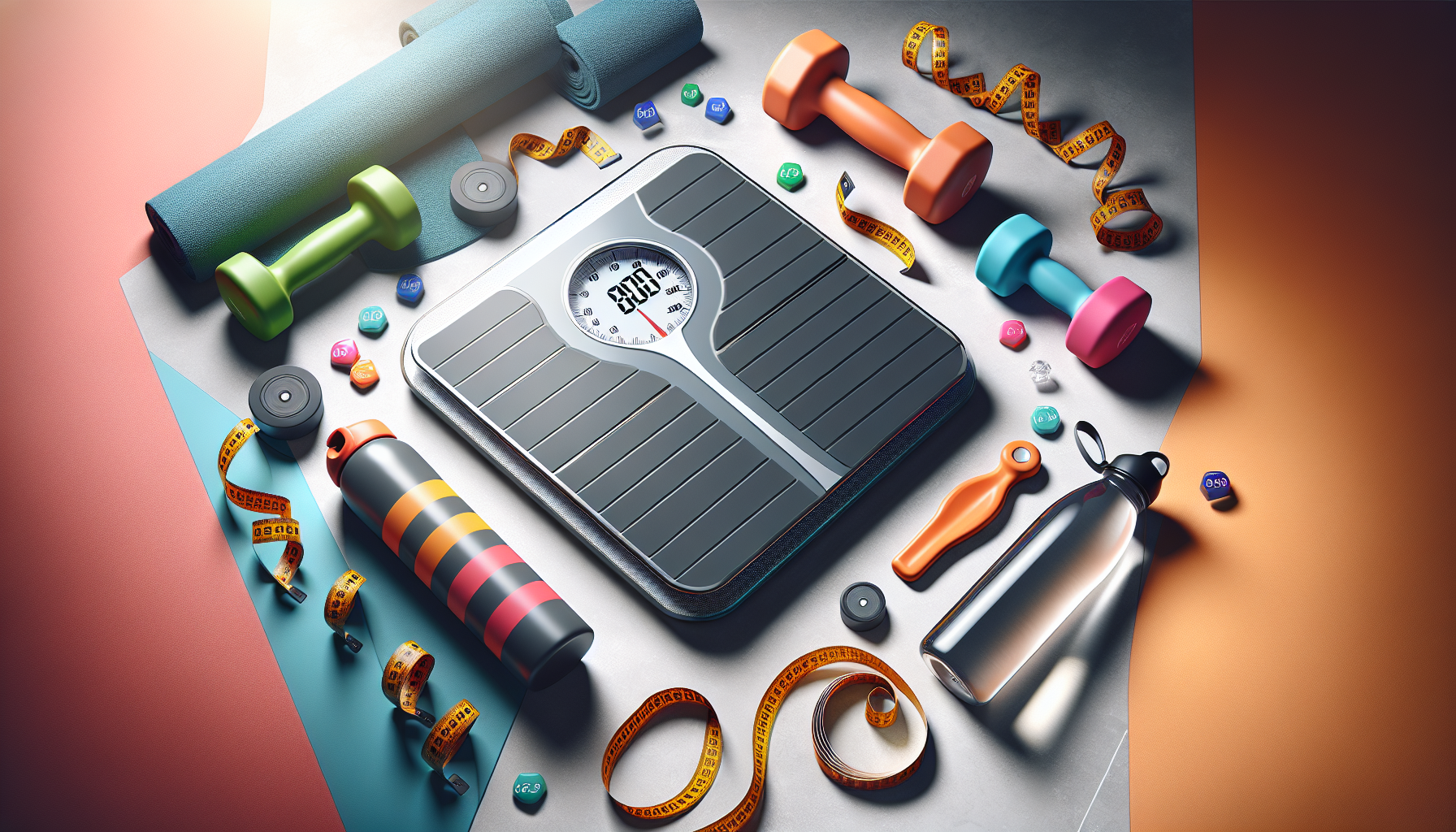What if you could sculpt your body and shed unwanted fat without spending countless hours in the gym? Many have discovered that with the right techniques, you can maximize your workouts for optimal fat loss in a fraction of the time. Let’s dive into effective fitness tips that can turn your fat-burning goals into reality.
Optimize Intensity
When it comes to burning fat, intensity can be your best friend. By elevating the intensity of your workouts, you push your body to burn more calories during and after exercise.
High-Intensity Interval Training (HIIT)
HIIT is a fantastic way to kickstart your metabolism. This method involves short bursts of high-intensity exercise followed by periods of rest or lower-intensity activity.
For example, you might sprint for 30 seconds, then walk for one minute. This cycle can be repeated for 15-20 minutes. The bonus? Your body continues to burn calories after your workout has ended due to the afterburn effect, or excess post-exercise oxygen consumption (EPOC).
Circuit Training
Circuit training combines strength training and cardio into one efficient workout. By using multiple exercises targeting different muscle groups with minimal rest in between, you maintain a high heart rate.
Here’s a simple circuit you could try:
| Exercise | Duration |
|---|---|
| Jumping Jacks | 1 minute |
| Push-Ups | 1 minute |
| Squats | 1 minute |
| Burpees | 1 minute |
| Plank | 1 minute |
After completing this circuit, take a short rest and repeat it two more times. Not only does this save time, but it also enhances your fat-burning potential.
Shorten Rest Periods
While rest is essential for recovery, the duration of your breaks can significantly impact how effective your training sessions are. If your goal is to burn fat, consider shortening your rest periods between sets and exercises.
Active Rest
Instead of sitting idly during your rest periods, consider implementing active rest strategies. This could involve light stretching, walking, or performing low-intensity movements like arm circles.
Active rest keeps your heart rate elevated and continues to burn calories, contributing to a more effective workout overall.
Supersets
Supersets involve performing two exercises back-to-back with little to no rest. This method not only cuts down on time but also boosts the intensity of your workout. For example, pairing a strength training exercise like deadlifts with a cardio burst like jumping rope can keep your heart pumping while also allowing you to build muscle.

Use AI-Based Cardio Planning
Modern technology can be a game-changer in your fitness journey. Using AI-driven apps and tools for cardio planning can help you get the most out of your workouts.
Customized Workouts
AI-based fitness platforms can create personalized workout regimens based on your fitness level, goals, and available time. This means you can efficiently burn fat while making the most of your limited workout time.
By analyzing your performance over time, these tools can suggest adjustments to your routine, ensuring you’re continuously challenged and progressing toward your goals.
Monitoring Your Heart Rate
Many AI fitness apps offer heart rate monitoring features. Staying aware of your heart rate can guide you in maintaining an optimal intensity level throughout your workouts. Aim to keep your heart rate within 70-85% of your maximum during high-intensity intervals. This zone is where fat burning is at its peak.
Incorporate Strength Training
Don’t underestimate the role of strength training in your fat-loss journey. Lifting weights not only helps build muscle but also increases your resting metabolic rate, meaning you’ll burn more calories even when you’re not working out.
Compound Movements
Focus on compound movements that work multiple muscle groups simultaneously. Exercises like squats, deadlifts, and bench presses require more energy than isolated movements, leading to higher calorie expenditure.
Here’s a table outlining some effective compound exercises you could incorporate into your routine:
| Exercise | Primary Muscles Worked |
|---|---|
| Squats | Quads, Hamstrings, Glutes |
| Deadlifts | Back, Hamstrings, Core |
| Bench Press | Chest, Shoulders, Triceps |
| Pull-Ups | Back, Biceps |
Progressive Overload
To continuously challenge your body, aim to gradually increase the weight or resistance you use in your strength training. This concept, known as progressive overload, ensures that your muscles are constantly being stimulated, further enhancing fat loss.

Stay Hydrated
While it may seem simple, hydration plays a vital role in your overall fitness and fat-loss efforts. Drinking enough water can help with metabolism and ensure that your body performs optimally during workouts.
Pre and Post-Workout Hydration
Before you begin your workout, make sure to hydrate effectively. Drinking water can help improve your exercise performance and endurance.
Post-workout, hydration aids in recovery. Consider adding electrolytes if you’ve had a particularly intense session, as this can help replenish essential nutrients lost through sweat.
Monitor Your Intake
Keeping track of your water intake can be beneficial. Aim for at least half of your body weight in ounces of water daily. For example, if you weigh 160 pounds, you should aim for about 80 ounces of water each day.
Nutrition Matters
While exercise is crucial for fat loss, what you eat plays an equally important role. Fueling your body with the right nutrients can optimize your workouts and speed up fat loss.
Balanced Macronutrients
Ensure that your diet includes a balanced mix of carbohydrates, proteins, and fats. Here’s a general guide:
- Proteins: Essential for muscle repair and growth (think chicken, fish, beans).
- Carbohydrates: Provide energy for your workouts (opt for whole grains and fruits).
- Fats: Important for overall health (focus on healthy fats like avocados and nuts).
Consider using a food diary to track your macronutrient intake and ensure you’re meeting your fitness goals.
Meal Timing
Be mindful of when you eat in relation to your workouts. Consuming a balanced meal or snack about 30 minutes to an hour before you exercise can provide the energy needed for an effective workout. Post-workout, aim to consume protein within 30 minutes to help with muscle recovery.

Consistency is Key
No matter what techniques or strategies you choose, consistency in your workouts and nutrition is essential for long-term fat loss. Set realistic goals and create a routine that fits your lifestyle.
Develop a Schedule
Try to set specific days and times for your workouts and meal prep. Treat these time slots as non-negotiable appointments. This not only makes it easier to stay accountable but also reinforces healthy habits.
Keep a Progress Journal
Documenting your journey can help keep you motivated and highlight your progress. Note achievements, whether it’s lifting heavier weights, completing more reps, or simply feeling better about your body. Celebrate these victories — they’re all part of the journey!
Mix It Up
Variety in your workouts can keep things fresh and exciting. Consider trying different classes, outdoor activities, or new exercises to prevent boredom and plateauing.
Group Classes
Participating in fitness classes can provide a social aspect and motivation. Many gyms offer a range of options from spin to yoga to kickboxing. Group dynamics can push you to perform better than you might on your own.
Outdoor Workouts
If the weather permits, take your workout outside. Running, biking, and hiking can be refreshing alternatives to gym workouts while still offering intense fat-burning benefits.

Monitor Your Progress
To truly gauge your success, it’s essential to monitor your body composition and overall fitness level regularly.
Use Measurements Beyond the Scale
While weight can be one indicator of progress, it doesn’t tell the full story. Consider tracking other metrics like body measurements, how your clothes fit, and your energy levels.
Biometric Assessments
Investing in a body composition analysis can provide insights into your muscle-to-fat ratio, which is a more accurate measure of your fitness level than weight alone.
Embrace Recovery
Lastly, recovery is just as important as your workouts when it comes to fat loss. Always allow your body time to rest and rebuild.
Sleep Quality
Aim for 7 to 9 hours of quality sleep each night. Sleep deprivation can hinder your fat loss efforts by affecting hormone levels that regulate appetite and metabolism. Consider developing a relaxing bedtime routine that helps signal to your body that it’s time to wind down.
Active Recovery Days
Incorporate active recovery days into your routine. This could involve low-intensity activities like walking, yoga, or gentle stretching, allowing your body to recover while still staying slightly active.

Conclusion
As you look to burn fat in less time, remember that there isn’t a one-size-fits-all solution. The best approach is a combination of optimizing your workout intensity, nutrition, and recovery strategies. Implement these tips, stay consistent, and adjust as necessary. Before you know it, you’ll be on your way to achieving your fitness goals, feeling more energetic, and enjoying a healthier lifestyle!










